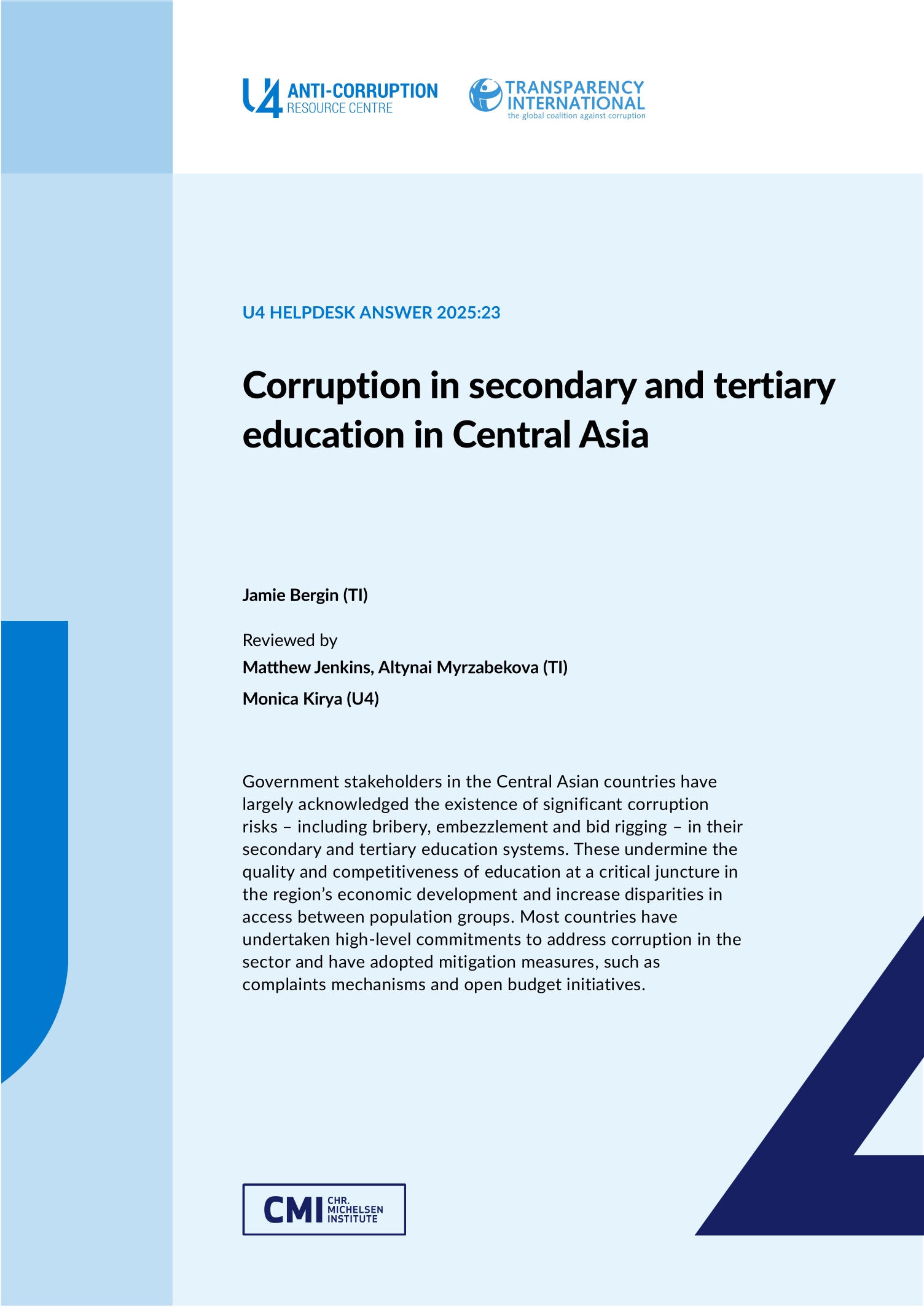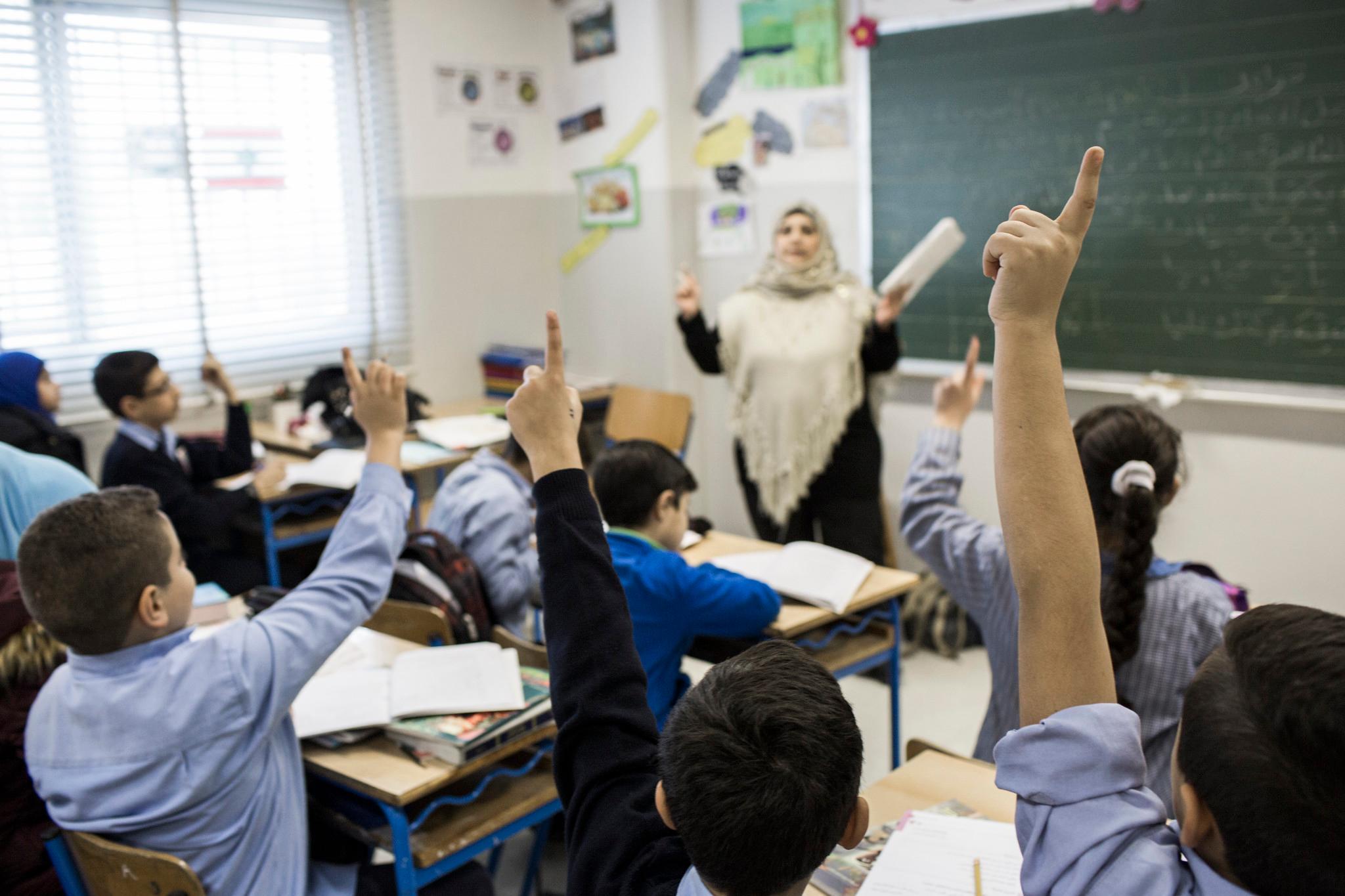Main points
- Secondary and tertiary education systems in Kazakhstan, Kyrgyzstan, Tajikistan, Turkmenistan and Uzbekistan are influenced by common legacies from the former Soviet Union. While education systems in these countries have distinctive post-independence trajectories, there is growing recognition by government stakeholders across the region that quality education is a key driver of economic development.
- However, corruption undermines the quality of education in the Central Asia region. For example, corrupt practices enable students to obtain qualifications on the basis of illicit fees and connections rather than on merit, which can have second-order effects on the labour market and economic productivity as underqualified people go on to occupy influential positions in the workforce. Corruption also exacerbates disparities in accessing education across the region, obstructing the right to education of individuals without the financial means to meet illicit demands.
- In some countries, survey studies of the education sector exist that often indicate a high prevalence of corruption. Additionally, some governments periodically publish statistics on the number of corruption cases they have uncovered in the sector. Lastly, media outlets frequently report on corruption scandals in the sector, which have implicated both junior and senior officials from the public administration and, in some cases, students or their guardians.
- Some of the most recurrent forms of corruption in the region include bribes being paid for access to institutions or higher grades, payments being extorted by teachers, lecturers and other officials, and informal fees (often mislabelled as “voluntary”) collected in return for services to which users are entitled.
- Other common practices include embezzlement of funds allocated to educational institutions, bid rigging in public contracting, as well as favouritism and nepotism influencing recruitment and appointment decisions.
- The existence of corruption in the sector has been generally acknowledged by Central Asian government stakeholders, albeit with varying degrees of candour in line with the prevailing media freedom levels in the respective country. Nevertheless, some have committed to address it in recent years, such as through sectoral level strategies and action plans.
- There has been an uptake of some mitigation measures in Central Asia, such as prosecuting complicit actors, improving merit-based recruitment and facilitating public tracking of educational funds. However, there have been few attempts to measure the impact of these measures on reducing corruption.



